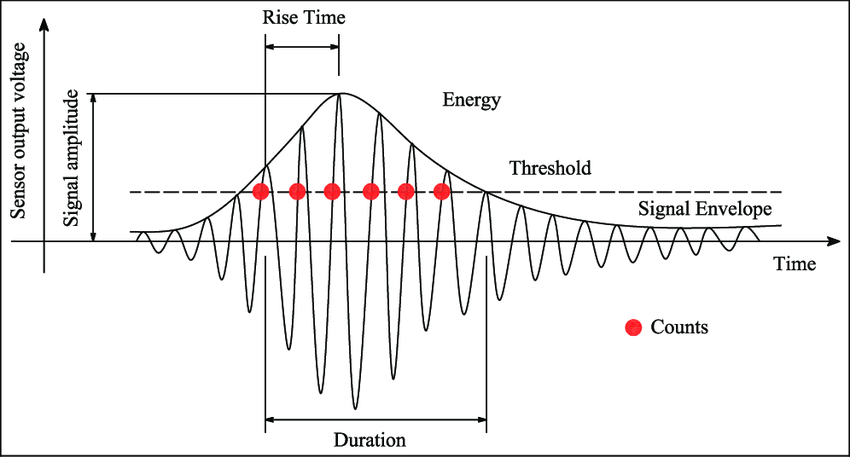What does the acoustic emission (AE) signal look like? What are the AE parameters?
Brief:A typical burst acoustic emission waveform looks like the envelop shape signals below. To simplify the AE signal processing and analysis, the method of extracting AE waveform signal features parameters is used.
A typical burst acoustic emission waveform looks like the envelop shape signals below. To simplify the AE signal processing and analysis, the method of extracting AE waveform signal features parameters is used.

Threshold: defines the start and the end of an AE signal. When the signal starts continuously exceeding the threshold, the AE system starts to record the signal until the signal amplitude is below the threshold.
Amplitude: is the peak amplitude of the signal wave. Usually represented in dBAE (sensor output 0dB = 1uV).
Duration: the time interval between the beginning and the end of the acoustic emission signal.
Rise time: the time interval between the starting point of AE signal and the peak of the AE signal.
Counts: also known as ring-down counts. The number of times the AE signal crosses the present threshold.
Energy: is also known as the measured area of the rectified signal envelop (MARSE).
ASL: Average Signal Level is the time average logarithmic value of the acoustic emission signal after rectification. The amplitude of the acoustic emission signal is measured in logarithmic scale, in unit of dB. At the input of the pre-amplifiers, 0dB = 1μV.
RMS: Root mean square. The effective average value of the signal amplitude, in unit of V.





